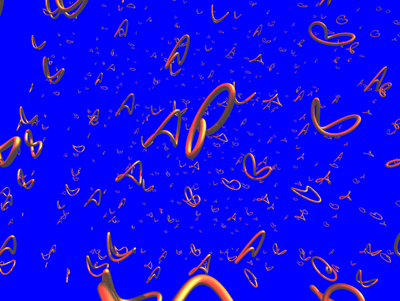 Over the last 40 years or so physicists and cosmologists have sought to construct a single grand theory that describes our entire universe from the subatomic soup that makes up particles and describes all forces to the vast constructs of our galaxies, and all in between and beyond. Yet a major stumbling block has been how to bring together the quantum theories that have so successfully described, and predicted, the microscopic with our current understanding of gravity. String theory is one such attempt to develop a unified theory of everything, but it remains jumbled with many possible solutions and, currently, is beyond experimental verification.
Over the last 40 years or so physicists and cosmologists have sought to construct a single grand theory that describes our entire universe from the subatomic soup that makes up particles and describes all forces to the vast constructs of our galaxies, and all in between and beyond. Yet a major stumbling block has been how to bring together the quantum theories that have so successfully described, and predicted, the microscopic with our current understanding of gravity. String theory is one such attempt to develop a unified theory of everything, but it remains jumbled with many possible solutions and, currently, is beyond experimental verification.
Recently however, theorists in Japan announced a computer simulation which shows how our current 3-dimensional universe may have evolved from a 9-dimensional space hypothesized by string theory.
[div class=attrib]From Interactions:[end-div]
A group of three researchers from KEK, Shizuoka University and Osaka University has for the first time revealed the way our universe was born with 3 spatial dimensions from 10-dimensional superstring theory1 in which spacetime has 9 spatial directions and 1 temporal direction. This result was obtained by numerical simulation on a supercomputer.
[Abstract]
According to Big Bang cosmology, the universe originated in an explosion from an invisibly tiny point. This theory is strongly supported by observation of the cosmic microwave background2 and the relative abundance of elements. However, a situation in which the whole universe is a tiny point exceeds the reach of Einstein’s general theory of relativity, and for that reason it has not been possible to clarify how the universe actually originated.
In superstring theory, which is considered to be the “theory of everything”, all the elementary particles are represented as various oscillation modes of very tiny strings. Among those oscillation modes, there is one that corresponds to a particle that mediates gravity, and thus the general theory of relativity can be naturally extended to the scale of elementary particles. Therefore, it is expected that superstring theory allows the investigation of the birth of the universe. However, actual calculation has been intractable because the interaction between strings is strong, so all investigation thus far has been restricted to discussing various models or scenarios.
Superstring theory predicts a space with 9 dimensions3, which poses the big puzzle of how this can be consistent with the 3-dimensional space that we live in.
A group of 3 researchers, Jun Nishimura (associate professor at KEK), Asato Tsuchiya (associate professor at Shizuoka University) and Sang-Woo Kim (project researcher at Osaka University) has succeeded in simulating the birth of the universe, using a supercomputer for calculations based on superstring theory. This showed that the universe had 9 spatial dimensions at the beginning, but only 3 of these underwent expansion at some point in time.
This work will be published soon in Physical Review Letters.
[The content of the research]
In this study, the team established a method for calculating large matrices (in the IKKT matrix model4), which represent the interactions of strings, and calculated how the 9-dimensional space changes with time. In the figure, the spatial extents in 9 directions are plotted against time.
If one goes far enough back in time, space is indeed extended in 9 directions, but then at some point only 3 of those directions start to expand rapidly. This result demonstrates, for the first time, that the 3-dimensional space that we are living in indeed emerges from the 9-dimensional space that superstring theory predicts.
This calculation was carried out on the supercomputer Hitachi SR16000 (theoretical performance: 90.3 TFLOPS) at the Yukawa Institute for Theoretical Physics of Kyoto University.
[The significance of the research]
It is almost 40 years since superstring theory was proposed as the theory of everything, extending the general theory of relativity to the scale of elementary particles. However, its validity and its usefulness remained unclear due to the difficulty of performing actual calculations. The newly obtained solution to the space-time dimensionality puzzle strongly supports the validity of the theory.
Furthermore, the establishment of a new method to analyze superstring theory using computers opens up the possibility of applying this theory to various problems. For instance, it should now be possible to provide a theoretical understanding of the inflation5 that is believed to have taken place in the early universe, and also the accelerating expansion of the universe6, whose discovery earned the Nobel Prize in Physics this year. It is expected that superstring theory will develop further and play an important role in solving such puzzles in particle physics as the existence of the dark matter that is suggested by cosmological observations, and the Higgs particle, which is expected to be discovered by LHC experiments.
[div class=attrib]Read the entire article here.[end-div]
[div class=attrib]Image: A visualization of strings. Courtesy of R. Dijkgraaf / Universe Today.[end-div]
